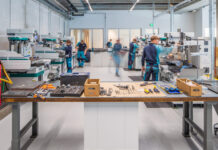By Gordon Ayres – Secretary General Southern African Biogas Industry Association (SABIA)
The word in energy at the moment is Hydrogen, the simplest of all elements. It has suddenly become the darling of every energy expert’s expectation to solve in one major leap the needs of the energy hungry world.
However, as usual the reality is not quite as neat and easy. Unknown by many is the fact that hydrogen is used predominately in processing. In South Africa it is mainly used to synthesise ammonia and for the manufacturing of nitrogenous fertilizers. It is also used in creating chemical bonds and compounds used in manufacturing.
The majority of hydrogen available in South Africa comes from Sasol who generates in excess of two million tons a year. In the new speak this is called ‘grey hydrogen’ as it is produced using fossil-based energy. This is where things get sticky. With the new European standards this means that many products, which are manufactured in South Africa using fossil-based energy and are then exported, are going to be taxed at a higher rate than their competition. This will be done through a carbon border adjustment mechanism. This makes our exports, which are already carrying a transport burden, even less attractive to market. Given the value of SA exports to Europe this could be a very costly mistake.
There is a solution to this problem.
The solution the world is banking on is green hydrogen. This is hydrogen which has been generated using green energy. As Europe has very little open space or sunlight, the potential for countries which have been ignored by the green trend is huge. Countries such as Namibia, South Africa and Chile have all been identified as potential suppliers with massive funding available for multi-stage projects.
These have some challenges. A huge amount of water is needed. It can be sea water, but that then needs to be run through a desalination plant before getting used. This adds to the cost and complexity of these types of projects. The projects that are getting funding are those that are sending green hydrogen to Europe. The needs of the local domestic market are being ignored.
Enter the forgotten child of green energy – biogas.
Biogas is manufactured by allowing organic waste to decompose in an anaerobic environment. This is not high tech and can be achieved at very small scale up to enormous plants. Once biogas is cleaned up it is comprised of two main gases, Methane (CH4) and Carbon Dioxide (CO2). The carbon dioxide can be stripped easily from the mix and has a commercial value of its own. It can be used in food processing and dry ice applications, and recently there is a potential of converting it into a fuel in its own right.
It is the methane that can be converted into green hydrogen, using a lot less energy than is needed to separate the chemical components of water. This has not only been proven in a laboratory but has also had commercial application in both Australia and France.
This could be a huge potential for South Africa.
We are sitting with a complex social issue in the disposal of organic waste. Communities, specifically around large municipalities, have experienced massive uncontrolled urbanisation which in turn has led to an inability to deal with urban waste and sewage waste.
These urban centres are also traditionally the centres of manufacturing.
If a dedicated drive was done to convert the existing waste water processing plant into a combined waste water and urban wet waste centre, this would be a huge advantage to the community. The waste would be processed using anaerobic process, a method which has been long accepted and demonstrated; and the gasses could be converted as discussed for local consumption.
The process comes with the answers to the challenges. First of all, it does not need more water than is currently being used by the water reticulation system. Secondly, in using gas from the process no extra energy is needed to run the plant, thus removing the electrical load of the waste water plant from the municipality. Thirdly, this gives municipalities who are under huge financial strain a method to upgrade facilities without increasing the financial burden. Lastly, potential off-takers can benefit from biogas as a decarbonisation lever.
We have been given a unique opportunity to solve a number of issues dogging our society while at the same time improving our exports. In addition, it would open up potential employment for many youth, not only in this exciting energy potential but also the technological spin-offs and access to other engineering potentials.















